|
|
|
|
|
|
|
News & Views item - June 2013 |
![]() The White House Office of Science and Technology Policy Releases National
Science and Technology Council Report on STEM Education. (June 28,
2013)
The White House Office of Science and Technology Policy Releases National
Science and Technology Council Report on STEM Education. (June 28,
2013)
It's interesting to compare the report's approach to that of the
Australian Council of Learned Academies ALCOA's report, STEM: Country Comparisons![]()
The 140 page report, entitled --
Federal Science, Technology, Engineering, and Mathematics Education
5-Year Strategic Plan![]() -- reviews the importance of STEM education and the current
state of federal STEM efforts in the United States.
-- reviews the importance of STEM education and the current
state of federal STEM efforts in the United States.
And it presents five priority areas for federal investment:
improve STEM instruction;
increase and sustain youth and public engagement in STEM;
enhance STEM experience of undergraduate students;
better serve groups historically underrepresented in STEM fields;
and design graduate education for tomorrow's STEM workforce.
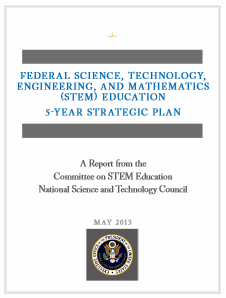
It also lays out an initial but detailed roadmap for implementation.
______________________________________________
In his letter to the US Congress dated May 31, 2013, John P. Holdren, Assistant to the President for Science & Technology, Director, Office of Science and Technology Policy open with "I am pleased to transmit this 5-Year Federal Science, Technology, Engineering, and Mathematics (STEM) Education Strategic Plan in response to the requirements of the America Competes Reauthorization Act of 2010. Prepared by the Committee on STEM Edu cation (CoSTEM) of the National Science and Technology Council, it follows up the interim report that CoSTEM provided to you in February 2012 under the title Coordinating Federal STEM-Education Investments: Progress Report.
"The health and longevity of our Nation’s, citizenry, economy and environmental
resources depend in large part on the acceleration of scientific and
technological innovations, such as those that improve health care, inspire new
industries, protect the environment, and safeguard us from harm. Maintaining
America’s historical preeminence in the STEM fields will require a concerted and
inclusive effort to ensure that the STEM workforce is equipped with the skills
and training needed to excel in these fields."
And concludes optimistically: "Congressional leadership will be critical to our continued and collective effort on securing the Nation’s position at the forefront of STEM innovation and discovery. I look forward to working with legislative leaders on this critical priority."
____________________________________________________
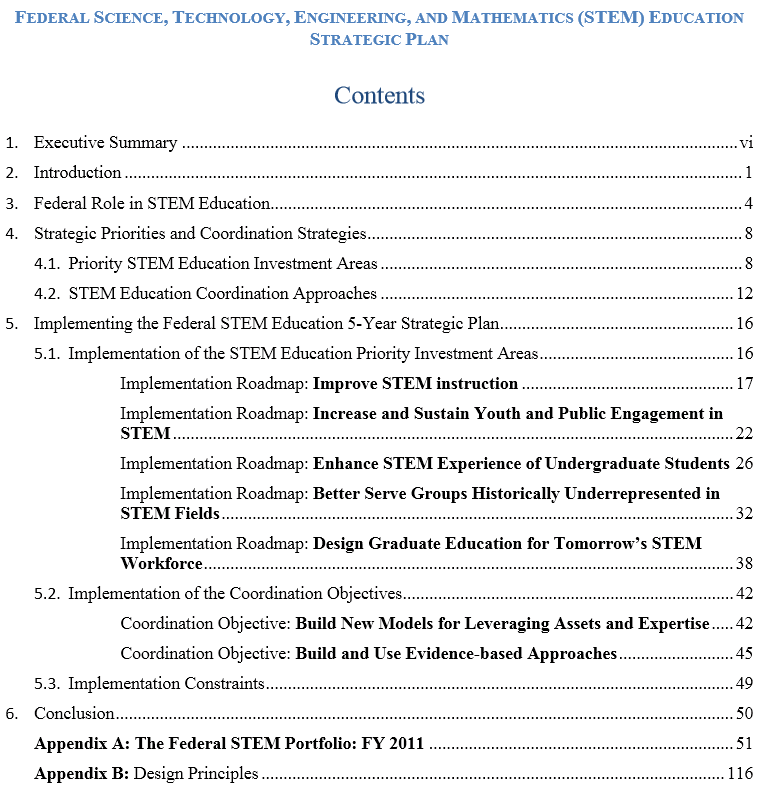
_______________________________________________
And herewith is the executive summary in full followed by an example of the tabular format used throughout the report.
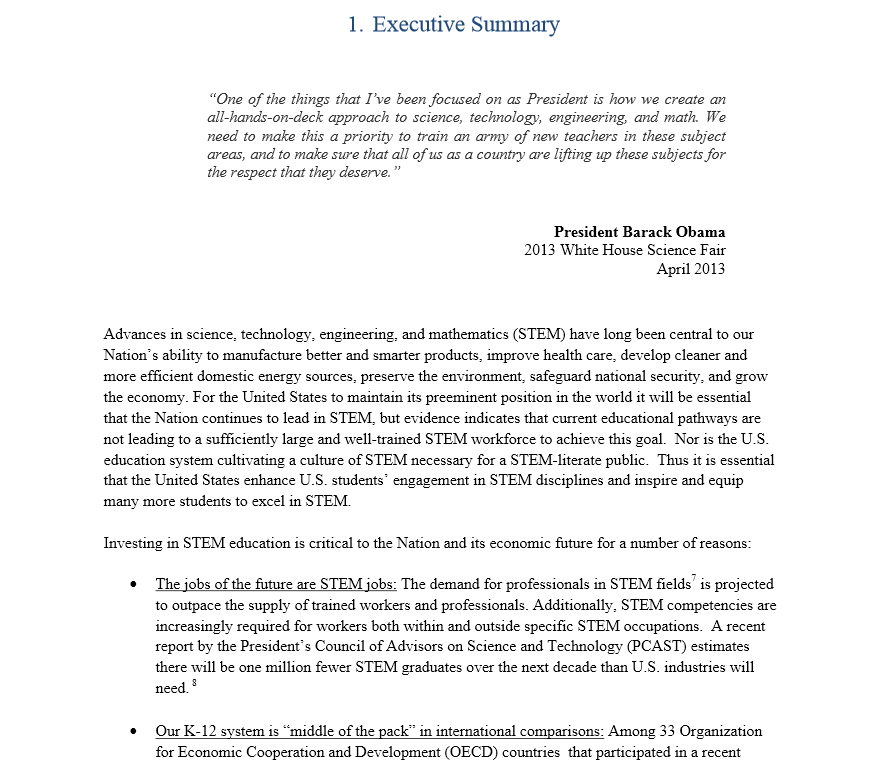
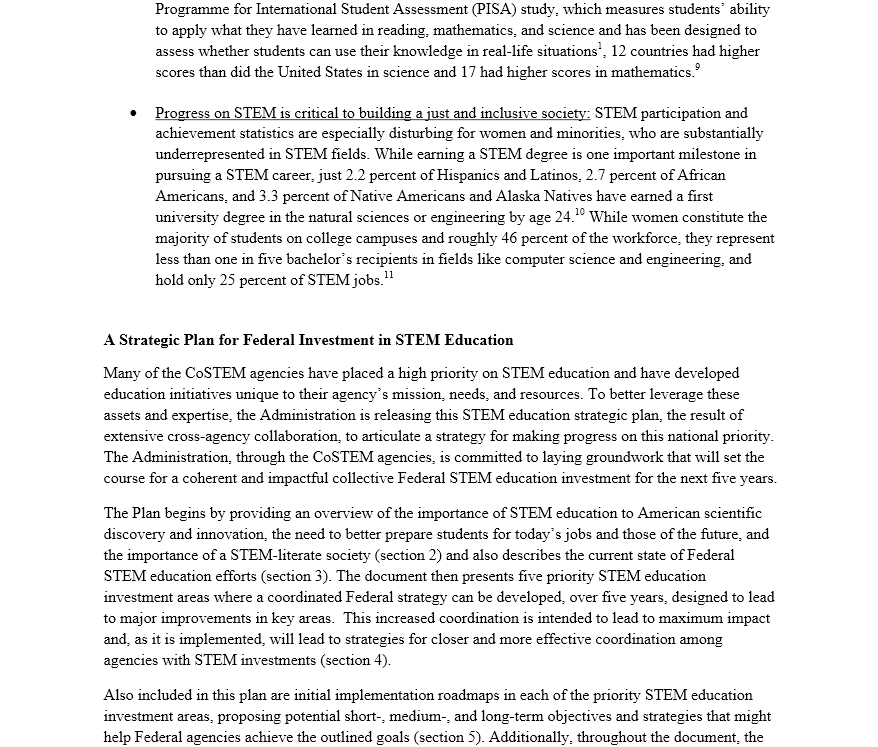
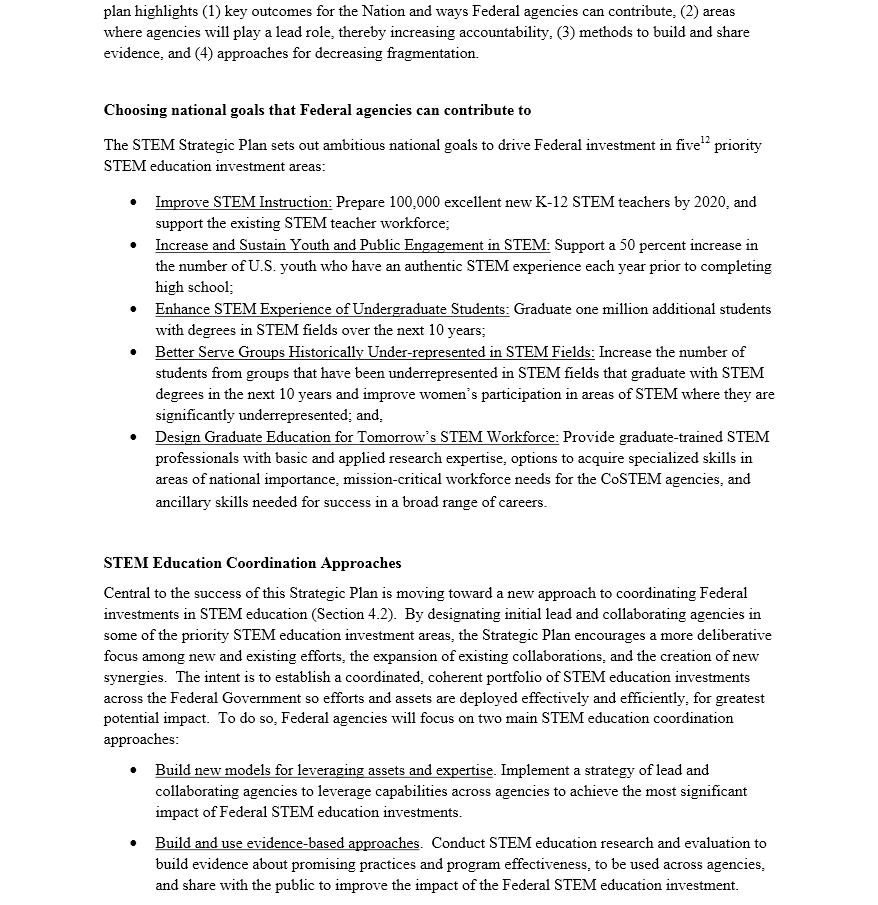

_____________________________________________________
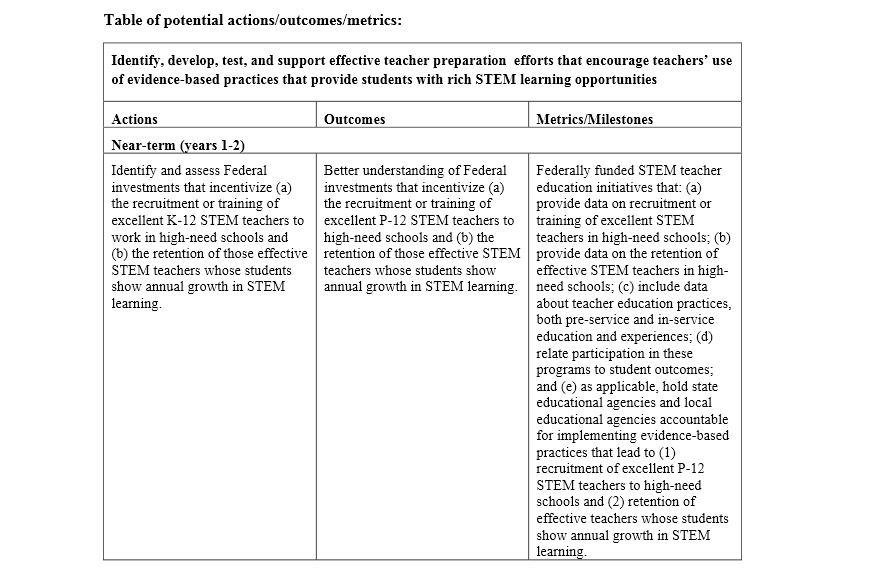
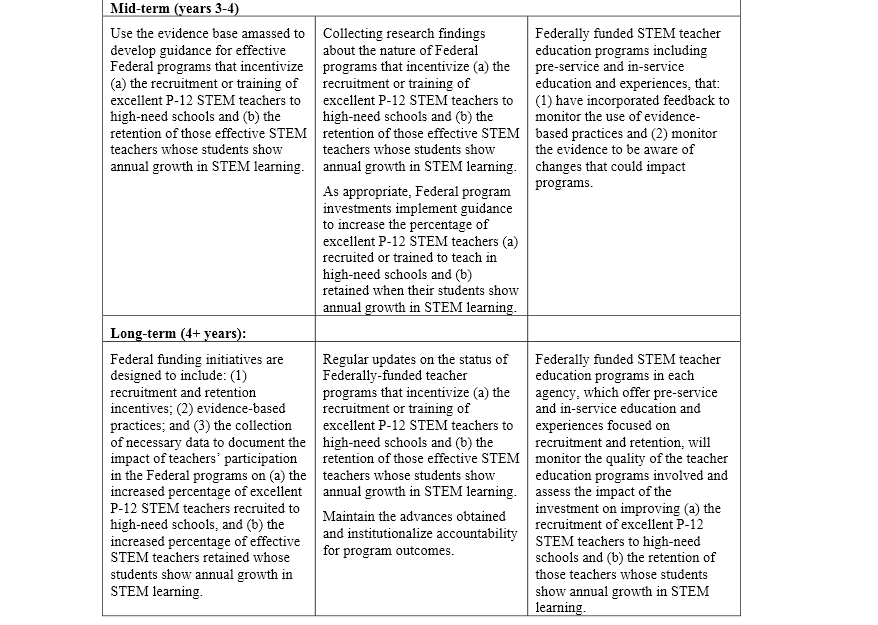
The report concludes:
Given that many jobs of the future will be STEM jobs, that our K-12 system is “middle of the pack” in international comparisons, and that progress on STEM edu cation at multiple levels is critical to building a just and inclusive society, there is an urgent need to continue to improve STEM education in the United States. Much knowledge for how to make progress exists. Federal agencies have the collective capacity to make a difference. This Strategic Plan identifies goals, priorities, and a new framework and mechanisms for collaboration and program improvement. This Strategic Plan charts a course for sustained improvement and can help Federal investments in STEM education programs make a difference for many more students, educators, and members of the public. Implementation will require making hard choices, forging new partnerships, and focusing on outcomes. Adjustments along the way will be necessary but the Federal agencies will work together to make progress on this national priority.
Followed by two Appendices the first of which outlines the inventory of FY 2011 Federal investments in STEM education, and the second of which deals with "investment design principles"